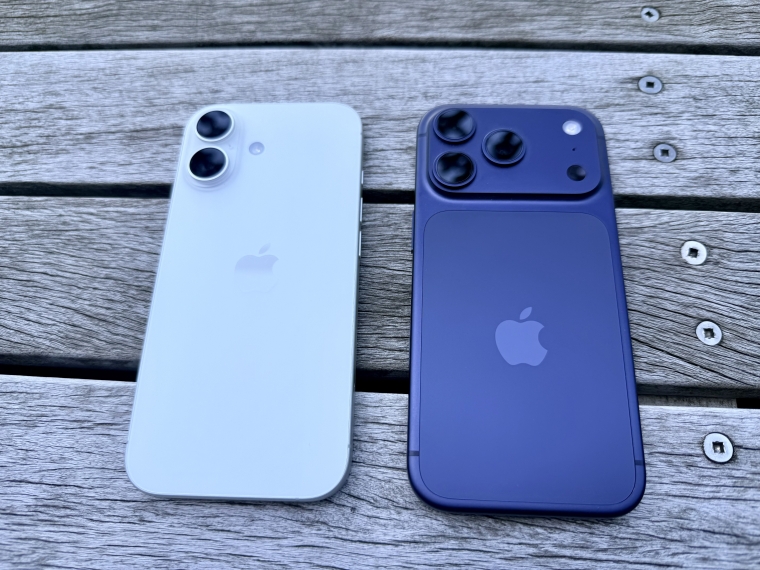
This year Apple seems to have figured out what users look for in smartphones. The company’s enjoying record sales in the gigantic but tough Chinese market, taking the top position there according to Counterpoint Research statistics.
It’s the iPhone 17 and iPhone 17 Pro and Pro Max with their more traditional design that sell strongly. The iPhone Air with its slimline engineering doesn’t seem to have been a hit with users, possibly because people didn’t want to sacrifice premium phone features for slimness.
In fact, Apple’s reported to have paused the next version of the iPhone Air due to weak sales, leaving the company to focus on a foldable, which seems an entirely sensible move.
The long story short this year is that Apple has filled in the feature gaps for the iPhone 17 base model, whereas the Pro device improvements are worthwhile, but less dramatic compared to last year’s models.
Let’s take a look at what you get for your money.
| Feature | iPhone 17 (512 GB) | iPhone 17 Pro (512 GB) |
|---|---|---|
| Price (NZ$) | $2,299 | $2,999 |
| Processor | A19 Bionic chip | A19 Pro Bionic chip |
| Display |
6.3-inch ProMotion Super Retina XDR, 1-120 Hz |
6.3-inch ProMotion Super Retina XDR, 1-120 Hz |
| Camera system | Dual 48 MP (wide, ultra-wide) | Triple 48 MP (wide, ultra-wide, telephoto) |
| Optical zoom | 2x | 4x |
| LiDAR scanner | No | Yes |
| Frame material | Aluminium | Aluminium with vapour chamber cooling |
| USB data speed | USB 2.0 (480 Mbps) | USB 3.2 Gen 2 (10 Gbps) |
| Dimensions | 149.6 by 71.5 by 8 mm | 150 by 71.9 by 8.8 mm |
| Weight | 177 grams | 204 grams |
On the iPhone 17, the big upgrade on the outside is the ProMotion display. It's the same as on the iPhone 17 Pro and has variable refresh rate (how many times per second the screen updates) between 1 to 120 Hertz. The low rate is to save power, the high rate provides smooth animations, and is set automatically by apps.
It is the same screen as on the Pro model, and very good it is too, with up to 3000 nits brightness, at 1206 by 2662 pixel resolution. Furthermore, there's support for HDR10 and Dolby Vision high dynamic range format for wide colour gamut, and brighter highlights and deeper blacks.
Aluminum is cooler
This year there’s some controversy over the material choice for the iPhone 17 frame and 17 Pro unibody: aluminium. Not fancy titanium then, which is harder and less prone to markings and dings from drops than aluminium, but which is heavier, and has a higher carbon footprint for manufacturing.
For marketing purposes, titanium spells much more premium than aluminium but the switch of materials seems to be Apple wanting better thermal management using the latter metal. There’s also a new vapour chamber system for the iPhone 17 Pro to further cool down the powerful A19 Pro chip.
I ran the 3Dmark suite of stress tests to “cook” the phones, and noticed that the base iPhone 17 which doesn’t have the vapour chamber cooling heats up quite a bit, particularly around the sides of the device.
Both devices were thermally very stable in the stress tests, staying at 82-85 per cent of peak performance.
Aluminium is also easier to dye in different, deep colours than titanium. Apple didn’t send the new Cosmic Orange colour iPhone 17 Pro, and a Deep Blue model arrived instead (which to be fair looks nice enough). And, there’s a new synthetic Pro case to go with it, that’s nice to the touch and protects that aluminium body.
Meanwhile, the iPhone 17 is in plain white, with no Corning Ceramic Shield for the back.
But, like the Pro model, the iPhone 17 has the newer Ceramic Shield 2 for the front, which Apple says has three times better scratch resistance (presumably compared to the first-generation of the glass ceramic coating).
The physical buttons on the new iPhones are the same as last year: on the top left, a customisable Action button, and volume up and down; on the top right, the Side button for locking the screen and invoking Siri, and bottom right, the Camera Control touch sensitive button that I’m still getting used to, but which is cool to use as a shutter release.
Both are rated Ingress Protection (IP) 68 standard, and can survive in up to 6 metres of water for up to 30 minutes.
Under the hood
Inside, the iPhone 17 has the aforementioned A19 chip. The Pro version has the A19 Pro variant of it, with Taiwan Semiconductor Manufacturing Company making the chips for Apple, using a super small three nanometre process.
Both run at 4.26 gigahertz (GHz) speed, but on the 17 Pro your apps have more memory in different areas of the chipset to work with. The iPhone 17 Pro also has an extra graphics core.
That makes a speed difference between the two as the GeekBench 6 benchmark scores show:
| Test | iPhone 17 | iPhone 17 Pro |
|---|---|---|
| CPU single/multicore | 3750/9492 | 3964/10195 |
| GPU | 36957 | 45864 |
Benchmarks nowadays measure already-fast electronics against newer and even-faster ones, and they’ve become less meaningful as a result.
What the Geekbench numbers say is that the A19 chip is very quick. The iPhone 17 is 5 to 7 per cent faster than last year’s iPhone 16 Pro Max on processor tests, and nearly 15 per cent quicker for graphics. Fast versus even faster, in other words.
Looking at the iPhone 17 Pro, it beats the 16 Pro Max by 12 to 15 per cent for processor tests, and a big 42 per cent speed bump for graphics.
One not so obvious feature that the Pro has is the fast Universal Serial Bus (USB) connector that you access through the USB-C port at the bottom of the iPhones. I won’t go into the mess that is USB naming convention, but the iPhone 17 Pro gets the superfast 10 gigabits per second variant so that you can attach external storage to the phone. The iPhone 17 can only support 480 Mbps through its USB 2.0 connection in comparison.
A quick USB connection is necessary when you shoot video in Apple’s ProRes format, in high 4K resolution, and frame rates up to 60 and 120 per second. High resolution and frame rate video produces massive, multi-gigabyte sized files, so the internal phone storage would fill up in minutes.
The USB-C port is used for charging as well, and Apple made that a bit faster in the iPhone 17s with 40 Watt wall-warts which aren’t included.
Apple quotes battery at 31 hours video playback (28 hours streamed) which is OK. I found that both iPhones would go through a day’s use and then some, unless you’re in remote areas, which upped the energy consumption. Wireless Qi and Qi2 pads support is included, along with Apple MagSafe charging.
Wi-Fi 7 has finally arrived for the iPhones, through the new N1 network chip. It supports 6 GHz frequencies, but with 160 MHz channels only and not the wider, 320 MHz ones. It’s pretty quick still, and on my connection I was able to get around 1.5 Gbps.
Did I mention 5G cellular is supported? Because it is, along with the usual raft of wireless connectivity like satellite for Emergency SOS and Find My, multiple global navigation systems, second generation ultrawideband for accurate ranging, and thread networking for Internet of Things (IoT).
That is quite the specification sheet, and I haven’t covered everything.
Improved cameras
Premium smartphones have to have high-end cameras, and the new iPhones are no exception.
Both the iPhone 17 and the 17 Pro have uprated camera systems with all units now having 48 megapixel resolution.
On the base 17, there are now two Fusion units at the rear. The main camera is a 26 mm (35 mm film equivalent, and wide angle) focal length with f/1.6 aperture. It also has autofocus and sensor-shift optical image stabilisation that’s very good, particularly for video.
The second camera has a 13 mm f/2.2 ultra-wide lens, and the two units are a good combination for everyday photography and videos, night and day.
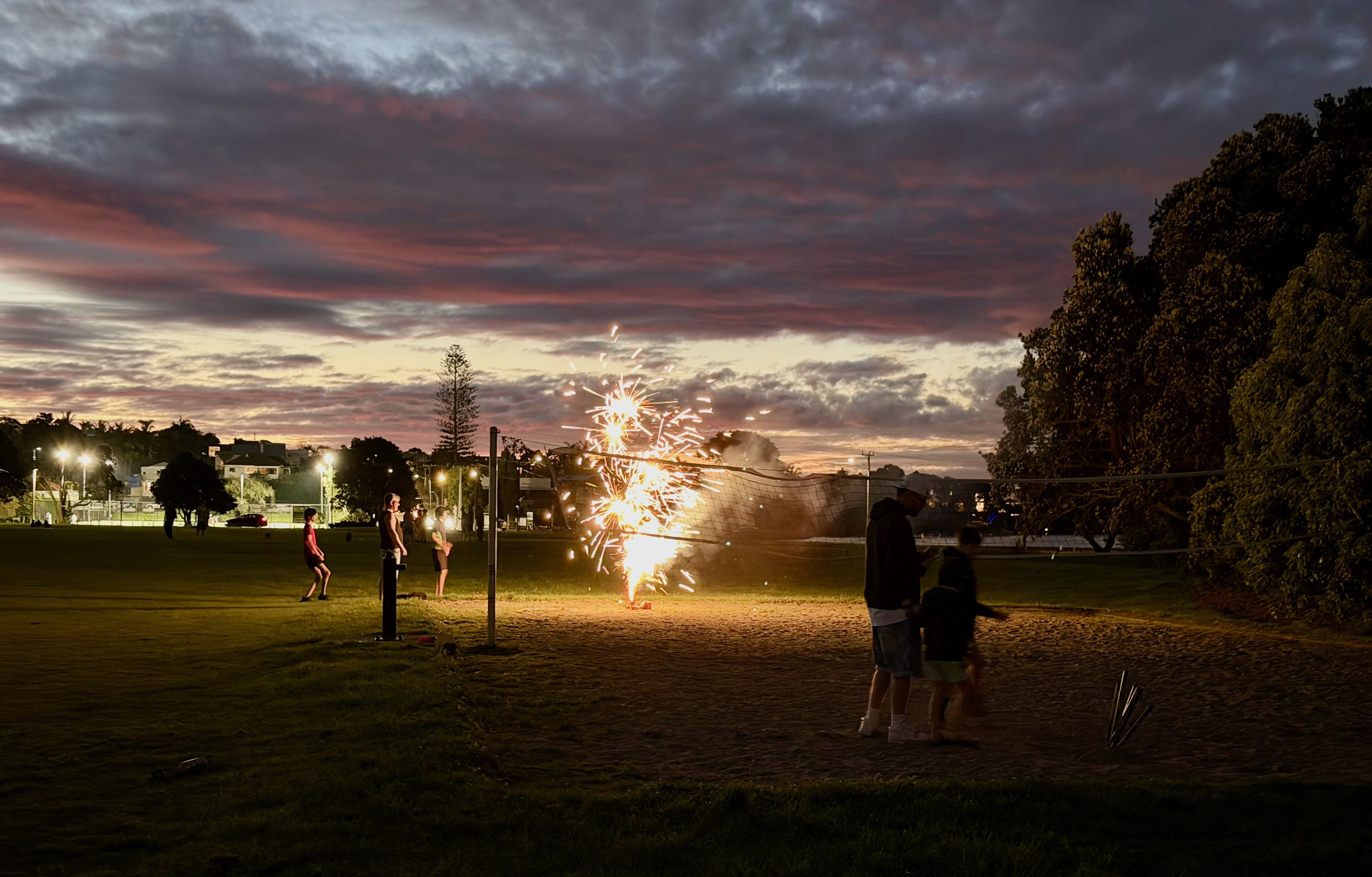
Meanwhile, the Pro has a slightly different main camera that’s 24 mm focal length, and f/1.78 aperture. The ultrawide is the same as on the iPhone 17, but the Pro has a new periscope telephoto lens camera, f2.8 and 100 mm focal length, optical stabilisation with sensor shift, autofocus and a 4x optical zoom. In addition, you get a Light Detection and Ranging (LiDAR) scanner for accurate distance measurement, particularly at night.
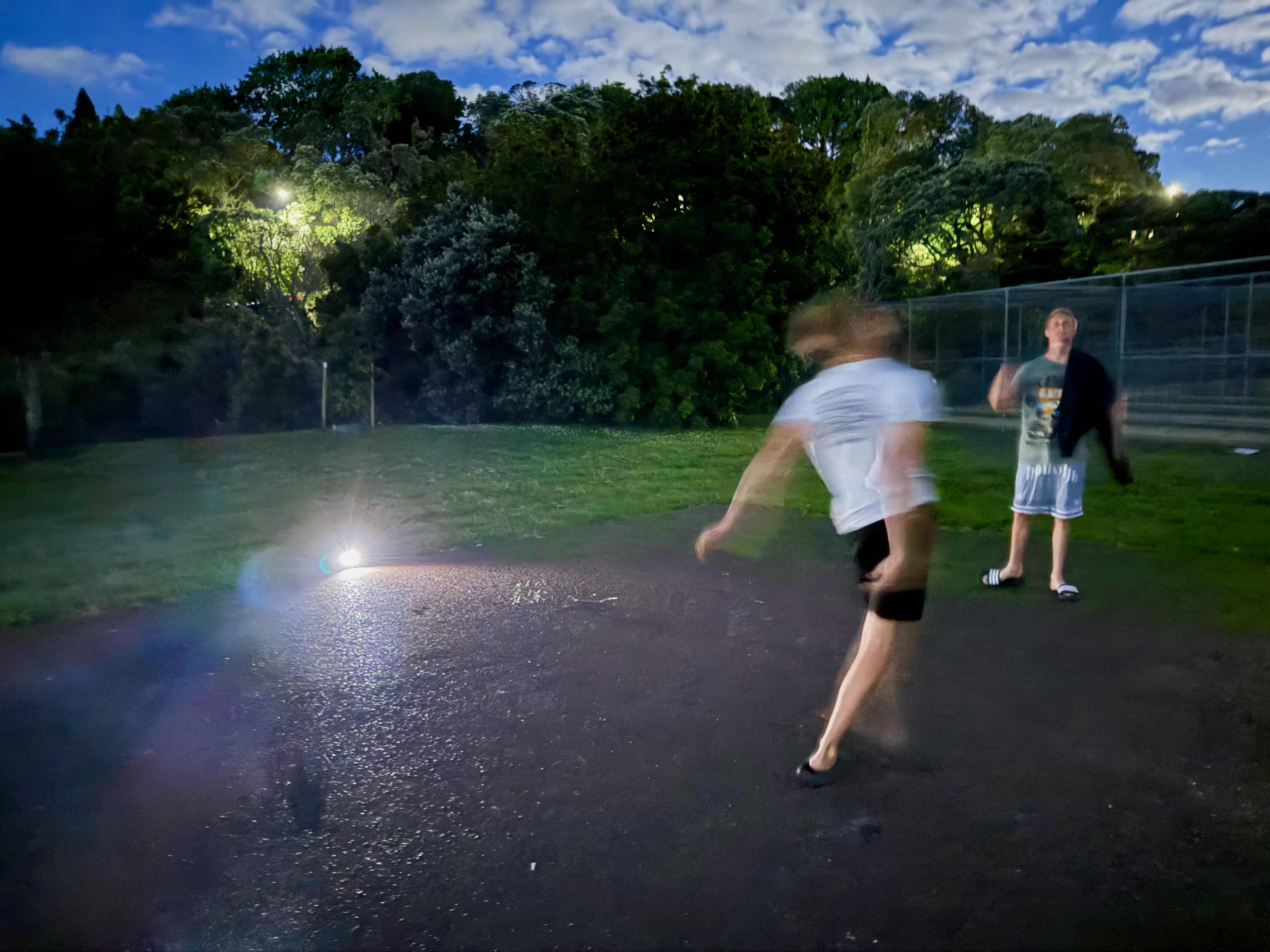
For selfies, Apple put in a new 18 Mpixel resolution front camera that has autofocus, f/1.9 aperture (the smaller the number, the brighter the lens) and 20 mm ultrawide focal length.
There’s also an octagonal sensor so you can use the iPhone vertically and shoot in 4:3, 1:1 and 16:9 but the images will be cropped and have different resolutions.
Apple applies computational photography to the cameras to produce low-noise 12 Mpixel photos, or 24 Mpixel ones with more detail; and you can shoot in the full 48 Mpixel resolution too.
Video tops out at 4K resolution and 60 frames per second for the iPhone 17; the Pro model can go up to 120 fps.
A new feature, courtesy of the A19 chipset, is picture-in-picture (PIP). You can do dual capture with the front selfie shooter active, and the rear cameras running. PIP also comes in handy for the 8x sensor-cropped zoom on the iPhone 17 Pro, helping you aim the telephoto camera at objects. A very useful feature, and it is unique to the new iPhones.
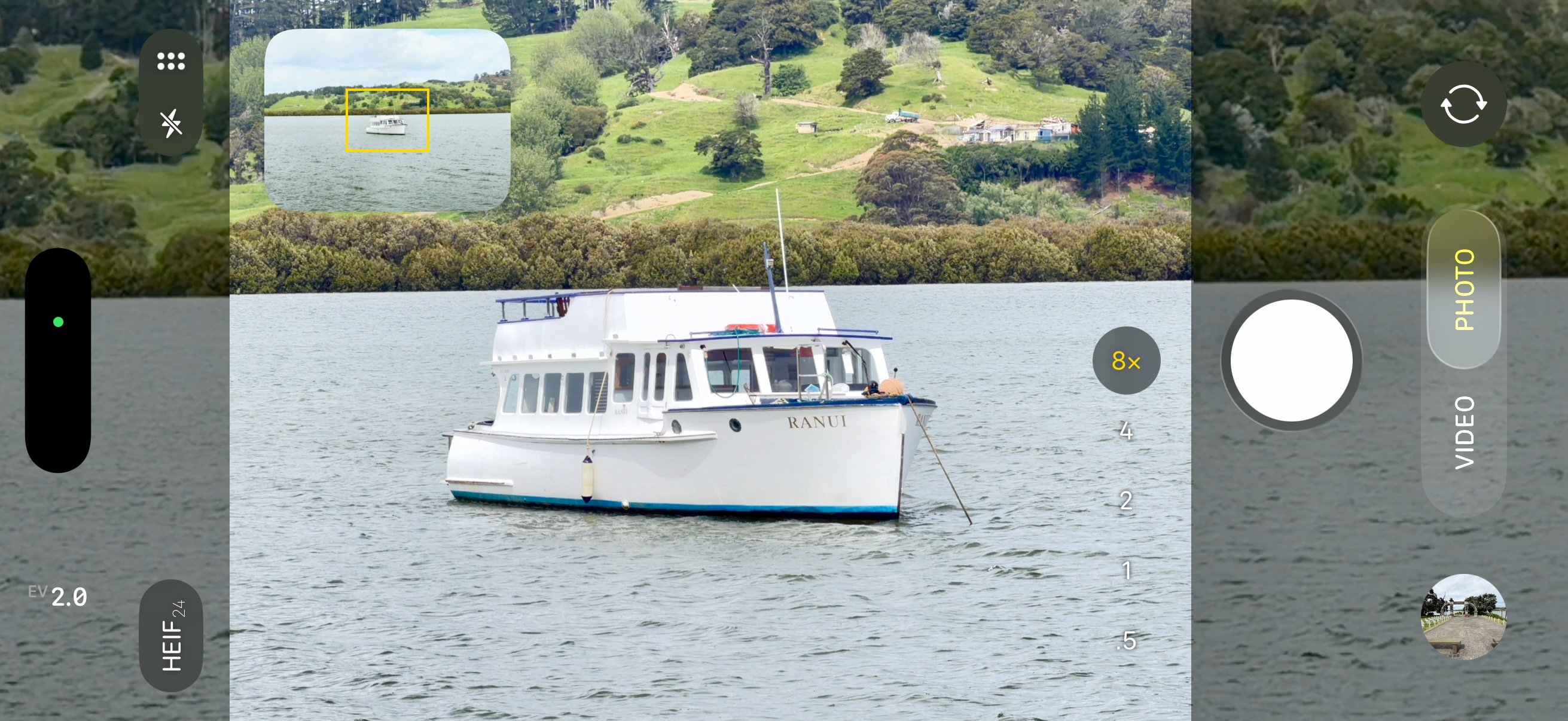
Both iPhones also have a digital zoom, which on the iPhone 17 maxes out at 10x (272 mm equivalent) and an insane 40x (1049 mm equivalent) on the 17 Pro, with not fantastic image quality.
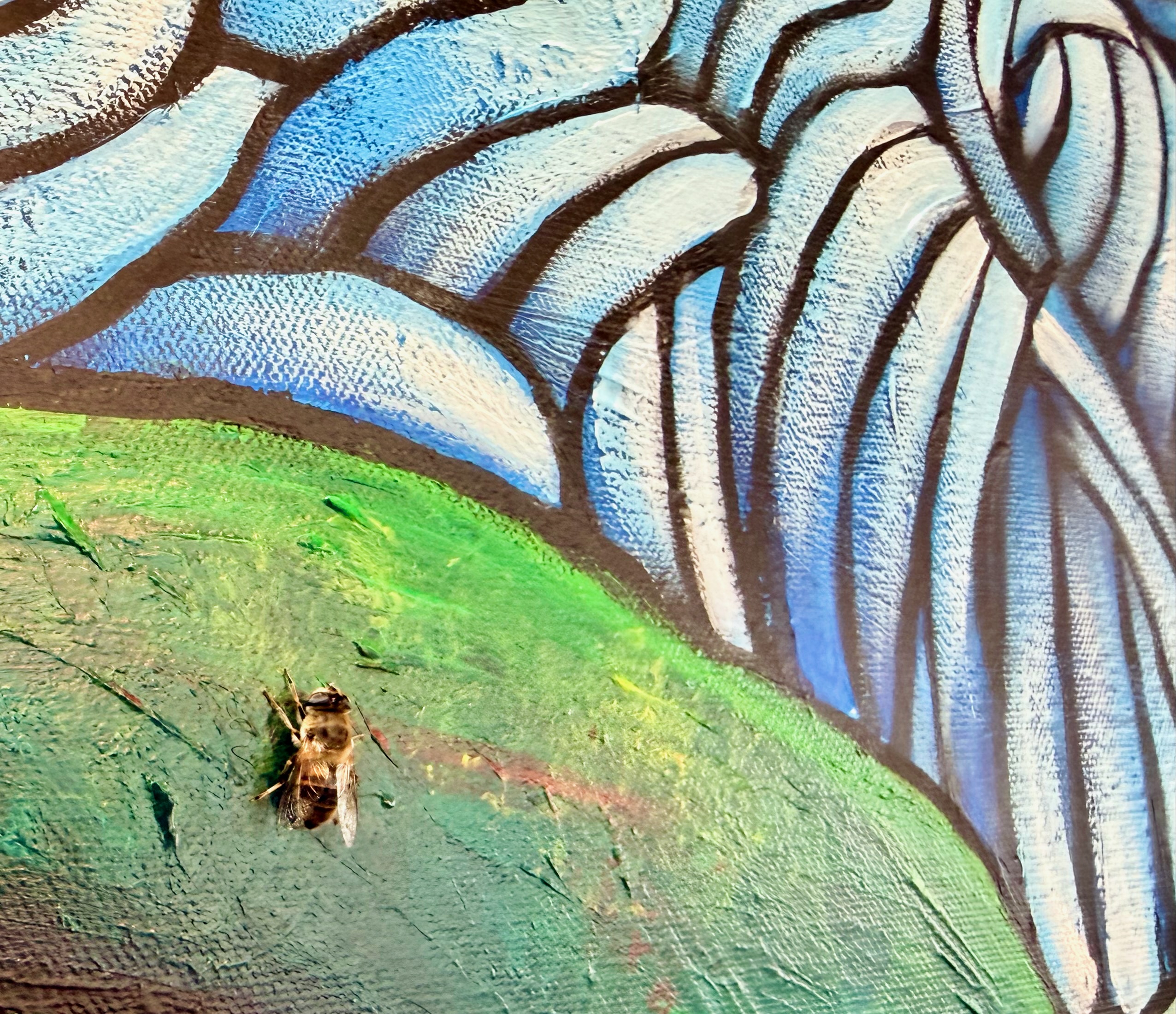
For most users, the camera system on the iPhone 17 will deliver what they need. The iPhone 17 Pro takes photography and videography up quite a few notches compared to the base model device, but less so compared to the iPhone 16 Pro from last year. Unless you count the newly added support for genlock (generator locking) devices to synchronise multiple iPhone 17 Pros and other cameras, which is shooting video at a very advanced level indeed.
iOS 26 and Apple Intelligence
The iPhone 17s run the new iOS 26 operating system, with the Liquid Glass transparency effect for the user interface which hasn’t found favour with everyone. If it bothers you, it’s possible to turn off most of the new look in settings.
My biggest bugbear is having to re-learn where frequently used functions are in iOS 26. In most apps, search is now at the bottom of the screen, and not on the top. Then I fired up the Camera app and couldn’t find the shooting modes. Not until I long pressed the video/photo button that is, and saw the modes appear as fly-outs.
Apple Intelligence is getting baked into iOS and iPhones, but it’s still a mixed bag.
An adaptive AI power mode that learns usage patterns and intelligently conserves energy seems like a useful thing, ditto the visual intelligence that arrived with iOS 26 that extracts texts from images, and searches based on content like screenshots.
Call Screening weeds out automated bot calls from unknown Aussie numbers, about your iTunes Visa card having racked up half a million dollars in charges which is great. It can also ask callers from unknown numbers to “state their purpose” with the recorded message then transcribed on the phones. Unfortunately, that doesn’t deter people from calling in the first place, to tell me that they have emailed me and what have you.
As per before, the OpenAI ChatGPT integration feels incomplete, has usage limits and is slow to use.
Also, poor Siri, Apple’s personal digital assistant won’t get a proper AI upgrade until next year, and occasionally refuses to cooperate in protest.
Live Translation for Messages and phone calls sounds intriguing, but other stuff like Genmojis and Image Playground to generate emojis and pictures is of very limited use.
Verdict
All right, enough of obsessing with a boatload of difficult to remember acronyms and numbers. Which iPhone 17 model should you get?
That’s easy: I don’t think you’d go wrong with the base iPhone 17. It has picked up a bunch of useful stuff for this year, making it a nicely rounded package for the majority of users, one that’ll last for quite a while.
Upping the budget by roughly a third buys the iPhone 17 Pro model that is very capable, particularly so for photography and video professionals, and for journalists who nowadays have to do multimedia for stories. If that’s your main use of the device, dropping another $200 for the 17 Pro Max which has a bigger 6.9-inch screen for viewing and editing, and better battery life makes sense.

We welcome your comments below. If you are not already registered, please register to comment.
Remember we welcome robust, respectful and insightful debate. We don't welcome abusive or defamatory comments and will de-register those repeatedly making such comments. Our current comment policy is here.